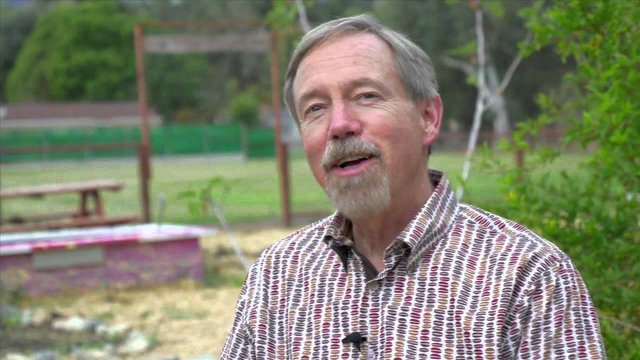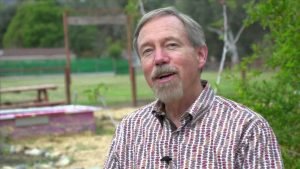

Toby Hemenway Source:
Excerpt from Toby Hemenway's Gaia's Garden: A Guide to Home-Scale Permaculture, Second Edition
"The phenomenon I was seeing, the “pop” of a young ecological garden into a self-sustaining ecosystem, is well recognized. It’s happened for the Bullock brothers, for Penny Livingston, for Roxanne, for Jerome Osentowski. It happened to me in southern Oregon. Kiel and I began improving our own zones 1 and 2 there when we arrived there, and in the fourth summer we watched once-struggling trees shoot skyward. Wildflowers we had not planted blossomed everywhere. The ground outside the house had been hard clay that baked to pavement in summer, broken only by a few tufts of grass burnt brown by July. After deep mulching and dense planting, that soil was black and full of worms and grew deeper each year. I went from having to fire up the irrigation system a few days after the rains ended in May, to not having to water anything until six weeks into the dry season. Many plants thrived without water through the entire hot, dry summer. The once-baked ground was shaded by fruit trees, a wealth of shrubs, and bush-sized perennial flowers interspersed with salad greens, herbs, and strawberries.
In the wilder, untended parts of our yard, where three or four stunted weed and grass species once labored to survive, a dozen or more wildflowers and native grasses soon grew tall and thick—and I didn’t plant them. Without looking hard, I counted over fifteen bee and beneficial wasp species, innumerable beetles, and four different lizards. Birds that had once only visited briefly, such as western tanagers, took up residence. And each succeeding year got better.
In my Portland yard, the process is repeating. Our soil didn’t need as much work as it had in southern Oregon, but the yard began as a badly compacted expanse of nothing but grass. Three years later, fruit trees, surrounded by thickly stacked guilds, are bearing; dense foliage cools us and the house on hot days; and wrens, flickers, jays, sparrows, chickadees, and a host of other birds spend much of their day here. Turning a shovelful of soil anywhere in the yard reveals black earth busy with worms. The once-empty yard froths up so much biomass that I am giving away compost and topsoil, else we’d be buried under it. The new trees are nearly big enough for Kiel to string her much-beloved hammock between them.
It’s useful to ask two questions here: What’s happening when a garden pops? And, how do we make it happen quickly?"
Gaia's Garden: A Guide to Home-Scale Permaculture - Second Edition - 2009
Chapter 12: Pop Goes the Garden
Subsection: The Garden Gets Popping
Posted from my blog with SteemPress : http://www.agsurrection.com/2018/03/15/master-quote-toby-hemenway-03-15-18/
Hi! I am a robot. I just upvoted you! I found similar content that readers might be interested in:
https://issuu.com/hanac66/docs/gaiasgarden/179
Downvoting a post can decrease pending rewards and make it less visible. Common reasons:
Submit